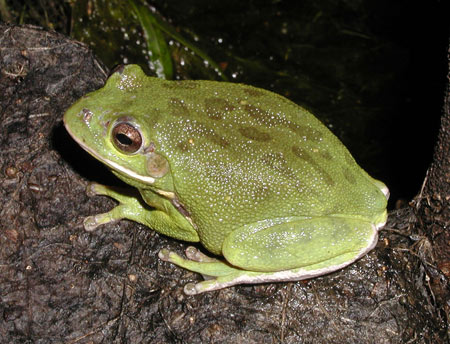Field Guide to Maryland's Frogs and Toads (Order Anura)
Main_Content
Barking Treefrog (Hyla gratiosa) | 
Adult Barking Treefrog, photo courtesy of Scott A. Smith

Calling Barking Treefrog, photo courtesy of Scott A. Smith
| | Former Name: |
Size:
|
Appearance: |
Habitats:

Photo of Habitat for Barking Treefrog,
courtesy of the Landowner Incentive Program
|
How to Find: |
Distribution in Maryland:Found only in a handful of coastal plain counties. This species is listed as state Endangered. If found, please report sightings to the Maryland Wildlife and Heritage Service.  Camoflauged adult Barking Tree Frog, photo courtesy of Corey Wickliffe | | For More Information: |
|
